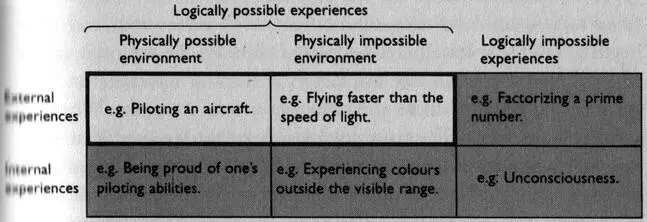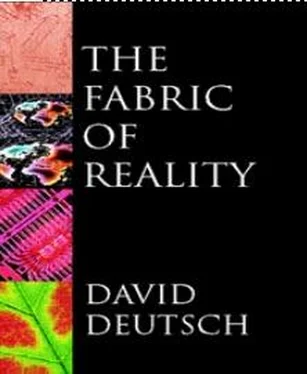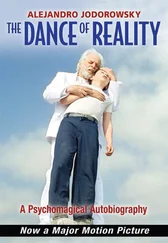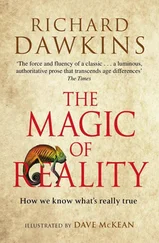David Deutch - The Fabric of Reality
Здесь есть возможность читать онлайн «David Deutch - The Fabric of Reality» весь текст электронной книги совершенно бесплатно (целиком полную версию без сокращений). В некоторых случаях можно слушать аудио, скачать через торрент в формате fb2 и присутствует краткое содержание. ISBN: , Жанр: Физика, Философия, на английском языке. Описание произведения, (предисловие) а так же отзывы посетителей доступны на портале библиотеки ЛибКат.
- Название:The Fabric of Reality
- Автор:
- Жанр:
- Год:неизвестен
- ISBN:0-7139-9061-9
- Рейтинг книги:4 / 5. Голосов: 2
-
Избранное:Добавить в избранное
- Отзывы:
-
Ваша оценка:
- 80
- 1
- 2
- 3
- 4
- 5
The Fabric of Reality: краткое содержание, описание и аннотация
Предлагаем к чтению аннотацию, описание, краткое содержание или предисловие (зависит от того, что написал сам автор книги «The Fabric of Reality»). Если вы не нашли необходимую информацию о книге — напишите в комментариях, мы постараемся отыскать её.
The Fabric of Reality — читать онлайн бесплатно полную книгу (весь текст) целиком
Ниже представлен текст книги, разбитый по страницам. Система сохранения места последней прочитанной страницы, позволяет с удобством читать онлайн бесплатно книгу «The Fabric of Reality», без необходимости каждый раз заново искать на чём Вы остановились. Поставьте закладку, и сможете в любой момент перейти на страницу, на которой закончили чтение.
Интервал:
Закладка:

table 5.1 A classification of experiences, with examples of each. Virtual reality is concerned with the generation of logically possible, external experiences (top-left region of the table).
The difficulty of making such machines may be merely technological, but what about this: suppose that the pilot of a flight simulator aims the simulated aircraft vertically upwards at high speed and then switches off the engines. The aircraft should continue to rise until its upward momentum is exhausted, and then begin to fall back with increasing speed. The whole motion is called free fall, even though the aircraft is travelling upwards at first, because it is moving under the influence of gravity alone. When an aircraft is in free fall its occupants are weightless and can float around the cabin like astronauts in orbit. Weight is restored only when an upward force is again exerted on the aircraft, as it soon must be, either by aerodynamics or by the unforgiving ground. (In practice free fall is usually achieved by flying the aircraft under power in the same parabolic trajectory that it would follow in the absence of both engine force and air resistance.) Free-falling aircraft are used to give astronauts weightlessness training before they go into space. A real aircraft could be in free fall for a couple of minutes or more, because it has several kilometres in which to go up and down. But a flight simulator on the ground can be in free fall only for a moment, while its supports let it ride up to their maximum extension and then drop back. Flight simulators (present-day ones, at least) cannot be used for weightlessness training: one needs real aircraft.
Could one remedy this deficiency in flight simulators by giving them the capacity to simulate free fall on the ground (in which case they could also be used as spaceflight simulators)? Not easily, for the laws of physics get in the way. Known physics provides no way other than free fall, even in principle, of removing an object’s weight. The only way of putting a flight simulator into free fall while it remained stationary on the surface of the Earth would be somehow to suspend a massive body, such as another planet of similar mass, or a black hole, above it. Even if this were possible (remember, we are concerned here not with immediate practicality, but with what the laws of physics do or do not permit), a real aircraft could also produce frequent, complex changes in the magnitude and direction of the occupants’ weight by manoeuvring or by switching its engines on and off. To simulate these changes, the massive body would have to be moved around just as frequently, and it seems likely that the speed of light (if nothing else) would impose an absolute limit on how fast this could be done.
However, to simulate free fall a flight simulator would not have to provide real weightlessness, only the experience of weightlessness, and various techniques which do not involve free fall have been used to approximate that. For example, astronauts train under water in spacesuits that are weighted so as to have zero buoyancy. Another technique is to use a harness that carries the astronaut through the air under computer control to mimic weightlessness. But these methods are crude, and the sensations they produce could hardly be mistaken for the real thing, let alone be indistinguishable from it. One is inevitably supported by forces on one’s skin, which one cannot help feeling. Also, the characteristic sensation of falling, experienced through the sense organs in the inner ear, is not rendered at all. One can imagine further improvements: the use of supporting fluids with very low viscosity; drugs that create the sensation of falling. But could one ever render the experience perfectly, in a flight simulator that remained firmly on the ground? If not, then there would be an absolute limit on the fidelity with which flying experiences can ever be rendered artificially. To distinguish between a real aircraft and a simulation, a pilot would only have to fly it in a free-fall trajectory and see whether weightlessness occurred or not.
Stated generally, the problem is this. To override the normal functioning of the sense organs, we must send them images resembling those that would be produced by the environment being simulated. We must also intercept and suppress the images produced by the user’s actual environment. But these image manipulations are physical operations, and can be performed only by processes available in the real physical world. Light and sound can be physically absorbed and replaced fairly easily. But as I have said, that is not true of gravity: the laws of physics do not happen to permit it. The example of weightlessness seems to suggest that accurate simulation of a weightless environment by a machine that was not actually in flight might violate the laws of physics.
But that is not so. Weightlessness and all other sensations can, in principle, be rendered artificially. Eventually it will become possible to bypass the sense organs altogether and directly stimulate the nerves that lead from them to the brain.
So, we do not need general-purpose chemical factories or impossible artificial-gravity machines. When we have understood the olfactory organs well enough to crack the code in which they send signals to the brain when they detect scents, a computer with suitable connections to the relevant nerves could send the brain the same signals. Then the brain could experience the scents without the corresponding chemicals ever having existed. Similarly, the brain could experience the authentic sensation of weightlessness even under normal gravity. And of course, no televisions or headphones would be needed either.
Thus the laws of physics impose no limit on the range accuracy of image generators. There is no possible sensation, or sequence of sensations, that human beings are capable of experiencing that could not in principle be rendered artificially. One day, as a generalization of movies, there will be what Aldous Huxley in Brave New World called ‘feelies’ — movies for all the senses. One will be able to feel the rocking of a boat beneath one’s feet, hear the waves and smell the sea, see the changing colours of the sunset on the horizon and feel the wind in one’s hair (whether or not one has any hair) — all without leaving dry land or venturing out of doors. Not only that, feelies will just as easily be able to depict scenes that have never existed, and never could exist. Or they could play the equivalent of music: beautiful abstract combinations of sensations composed to delight the senses.
That every possible sensation can be artificially rendered is one thing; that it will one day be possible, once and for all, to build a tingle machine that can render any possible sensation calls for something extra: universality. A feelie machine with that capability would be a universal image generator.
The possibility of a universal image generator forces us to change our perspective on the question of the ultimate limits of feelie technology. At present, progress in such technology is all about inventing more diverse and more accurate ways of stimulating sense organs. But that class of problems will disappear once we have cracked the codes used by our sense organs, and developed a sufficiently delicate technique for stimulating nerves. Once we can artificially generate nerve signals accurately enough for the brain not to be able to perceive the difference between those signals and the ones that our sense organs would send, increasing the accuracy of this technique will no longer be relevant. At that point the technology will have come of age, and the challenge for further improvement will be not how to render given sensations, but which sensations to render. In a limited domain this is happening today, as the problem of how to get the highest possible fidelity of sound reproduction has come close to being solved with the compact disc and the present generation of sound-reproduction equipment. Soon there will no longer be such a thing as a hi-fi enthusiast. Enthusiasts for sound reproduction will no longer be concerned with how accurate the reproduction is — it will routinely be accurate to the limit of human discrimination — but only with what sounds should be recorded in the first place.
Читать дальшеИнтервал:
Закладка:
Похожие книги на «The Fabric of Reality»
Представляем Вашему вниманию похожие книги на «The Fabric of Reality» списком для выбора. Мы отобрали схожую по названию и смыслу литературу в надежде предоставить читателям больше вариантов отыскать новые, интересные, ещё непрочитанные произведения.
Обсуждение, отзывы о книге «The Fabric of Reality» и просто собственные мнения читателей. Оставьте ваши комментарии, напишите, что Вы думаете о произведении, его смысле или главных героях. Укажите что конкретно понравилось, а что нет, и почему Вы так считаете.












